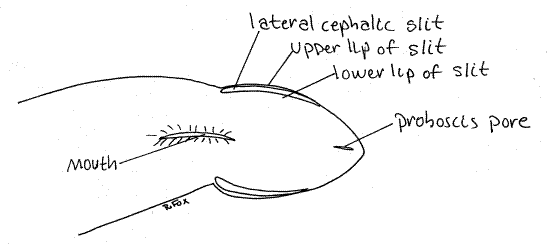Welcome back worm lovers!
Let’s talk about body– well, parts of the body! Specifically, a discussion about the distinguishing anatomical structures of the Cerebratulus lacteus, or the beloved milky ribbon worm of Phylum Nemertea. Surprisingly, the anatomy of these worms is not as unique as hoped. Almost all parts of their body are consistent with other members in their Class Analopa.
Every organism in Phylum Nemertea has something called a proboscis. This interesting structure functions as an important method of preying on food and responding to attack. In the video, a milky ribbon worm is threatened by the constant poking and prodding on its body. As a response, it releases a sticky, branched structure known as a proboscis, that is meant to essentially poison, startle, or capture prey and competition. The proboscis of the Cerebratulus lacteus, as well as all organisms in the class Analopa, lacks stylet structures, which typically work to puncture prey, but the milky ribbon worms are still considered excellent predators.
The presence of the proboscis itself is not unique within the species, but it is used as a channel or bridge from the mucus and makes a huge difference– not only in the life of the milky ribbon worm but in large clams as well! Recently, there has been a lot of research surrounding the attack of clams by milky ribbon worms with the use of a toxin (which will be specifically discussed in a future post). Only milky ribbon worms have been able to effectively kill clams because of the said toxin, and it is made from special internal mucus membranes and secreted from through the proboscis for attack.
The mucus is typically used to aid in locomotion, and the ongoing issue with understanding how the mucus structures works is that researchers do not have all the answers yet. There have been countless studies (many still ongoing) working to identify how the same material that helps the Cerebratulus lacteus move works just as effectively to kill their prey.

This picture displays exterior structures of organisms in the Cerebratulus genus, and the proboscis, sometimes functioning with toxins produced in internal mucus structures, comes through the proboscis pore and shoots at prey to capture food and remain safe around predators.
Citations
http://lanwebs.lander.edu/faculty/rsfox/invertebrates/cerebratulus.html
https://www.ncbi.nlm.nih.gov/pmc/articles/PMC5864730/
http://www.fishermensvoice.com/archives/201705MilkyRibbonWorms.html
